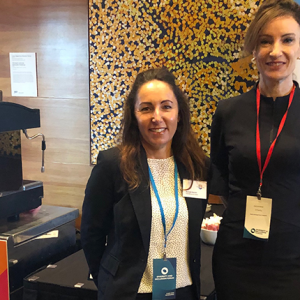Diversity and inclusion in the workplace are hot topics, but what do they mean? And why should you care?
We've put together this guide on diversity and inclusion in the workplace to help you better understand what it encompasses. We will cover everything from how representation impacts culture to the benefits of diversity for businesses and how your personal values may shape your reactions to different types of work environments.
What is Diversity and Inclusion?
Diversity is “the combination of differences among individuals or groups” or “the condition in which people of different ethnic, cultural, religious and social backgrounds, genders, and other defining identities, work or live together.” For example, diversity can refer to a team’s ethnic composition. Or it could be the number of female employees on staff. We call this type of diversity, 'surface level diversity', as it can be defined and understood through visible characteristics. Diversity of more subtle traits, or 'non-observing characteristics', is what we call 'deep level diversity'. Examples of this include thought, diversity, neurodiversity, and cognitive diversity.
Inclusion, on the other hand, is “a process through which groups encounter or interact with each other” and “the act or process of including someone in a group or community.” Adapted from Webster’s dictionary, this definition suggests that diversity and inclusion are overlapping concepts. This may explain why hiring managers often use these terms interchangeably, but it is important to be clear about what they mean to determine if your organisation is genuinely committed to diversity and inclusion. You can think of 'diversity' as describing the 'what', and inclusion describing the 'how'. And the good news is, if you're doing it well, the end result will be a sense of belonging across sections; this is where positive work cultures and high performance thrive.
So how do you measure the success of diversity at work? Studies suggest three main factors are key: the composition of employees, work 'play' (which includes the social and emotional climate), and the success of a team or organisation.
How Does Diversity Affect Your Organisation?
There are many ways in which diversity impacts the success of an organisation; let us look at three main ways your workplace can benefit:
Financial Benefits
Diversity can bring financial benefits to an organisation by increasing its appeal to a broader stakeholder base; improving customer satisfaction; and attracting better talent. So how does this happen? Here are a few ways:
- By supporting diversity, companies appeal to a broader base, which can attract customers from new market segments. People working in inclusive environments also tend to be great advocates for their employers, which tends to attract more customers. Don't forget, social influence is a powerful factor in today's world!
- When the potential of diversity is harnessed well, team performance generally increases due to the broader range of perspectives, or 'thought diversity', the team can tap into. Often when complex or new challenges are faced by an organisation, teams with the most diversity come up with the best solutions. After all, the most diverse teams are more likely to be culturally aware and sensitive to the needs of others!
Increased Creativity
Diverse groups tend to come up with more creative solutions, due to their experience working with different perspectives, backgrounds, and sensitivities. During brainstorming sessions, broadening the range of ideas considered is key to generating innovative ideas.
Creativity is also an important way of creating new businesses. A McKinsey study found that 70% of “high-impact” companies were founded by people from two or more ethnic groups. This can be attributed to diversity creating a more tolerant and flexible mindset in which new ideas can thrive.
Improved Satisfaction
Diverse teams are more satisfied with their jobs than less diverse teams. This can be attributed to an increased sense of comfort or belonging in a group with a broader range of perspectives. And because of this, diverse teams tend to be more satisfied with their work.
The power of diversity goes beyond the workplace too. Diversity can bring communities closer together and help them feel more connected.
Better Work Play
A team's social and emotional climate plays a significant role in business success. An inclusive, safe and fun workplace can boost morale and employee engagement, which drives productivity. It can also stimulate curiosity as people from diverse backgrounds share their stories and cultural rituals.
Improved Employee Engagement
Employee engagement is the emotional or psychological connection between employees/managers that drives performance. It is also one of the most critical factors for business success. A lack of engagement can slow down your team members, limit their creativity, stifle their motivation, and even make them less healthy overall.
The most diverse workforces have the highest levels of employee engagement. Here are some reasons why:
- Diversity improves teamwork: Diverse teams can work exceptionally well together when they feel psychologically safe, connected and able to contribute their unique knowledge, skills, and perspectives.
- Diverse teams make better decisions: Research shows that teams with more diversity make better decisions. This is because these teams are better equipped to consider a wider range of perspectives, thoughts, and ideas.
- Diversity fosters 'excellent risk-taking': Diverse groups tend to make decisions based on a broader consideration of risk factors, and have greater risk tolerance, leading to more overall success.
Click HERE to register for our Window of Work Values (WoWV) Profile accreditation workshop. Learn how to foster diversity in your organisation and shape your reactions to the culturally diverse groups within your company and community.




